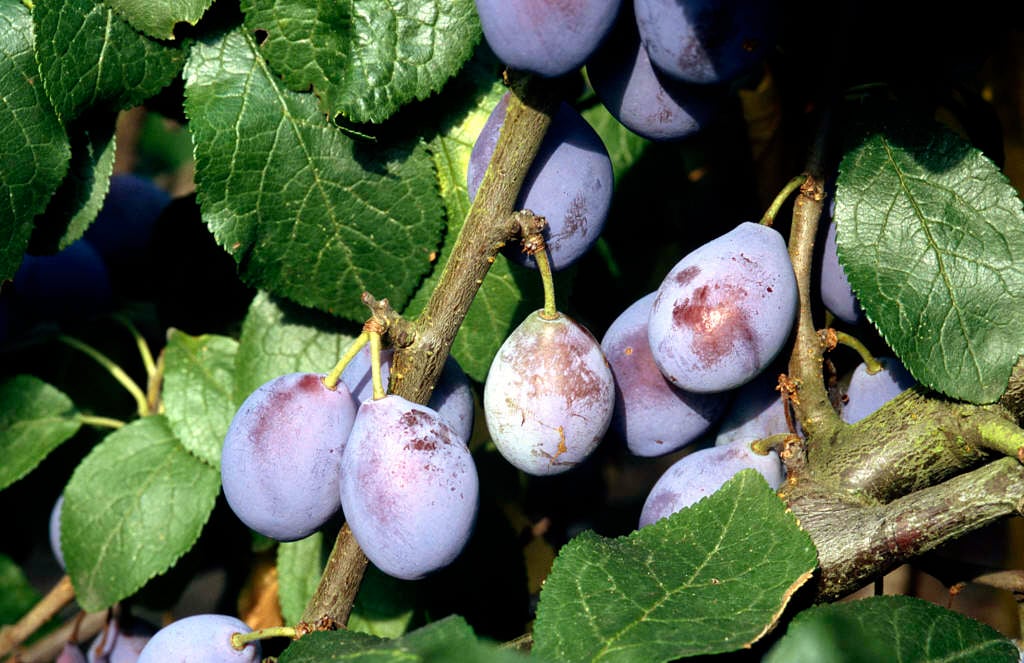Prunus insititia 'Prune Damson' (C)

damson 'Prune Damson'
A vigorous, but neat growing, cultivar that has larger fruits than 'Farleigh Damson'. A regular and good cropper with a picking time of late August. A late flowering cultivar in pollination group 5, so should escape spring frosts. Self-fertile
Synonyms
Prunus insititia 'Shropshire Damson'Prunus insititia 'Shropshire Prune'
see morePrunus domestica 'Shropshire Prune'
Prunus domestica 'Shropshire Damson'
Size
Ultimate height
2.5–4 metresTime to ultimate height
5–10 yearsUltimate spread
2.5–4 metresGrowing conditions
Moisture
Moist but well–drained, Well–drainedpH
NeutralColour & scent
| Stem | Flower | Foliage | Fruit | |
| Spring | White | Green | ||
|---|---|---|---|---|
| Summer | Green | Blue | ||
| Autumn | ||||
| Winter |
Position
- Full sun
Aspect
South–facing or West–facing
Exposure
Sheltered Hardiness
H6Botanical details
- Family
- Rosaceae
- Native to GB / Ireland
- No
- Foliage
- Deciduous
- Habit
- Bushy
- Genus
Prunus can be deciduous or evergreen trees or shrubs with showy flowers in spring, and often good autumn foliage colour. Some have edible fruit in autumn, and a few species have ornamental bark
- Name status
Accepted
How to grow
Cultivation
Grow in a moist, but well-drained soil in full sun. Keep a weed-free area of at least 60cm radius around trunk. Thin fruit if necessary. Irrigate in dry periods
Propagation
Propagate by chip budding or grafting on rootstock for fruit
Suggested planting locations and garden types
- Cottage and informal garden
- Wildlife gardens
- Wall side borders
- Edible fruit
Pruning
Regular pruning required for pruning established fans, but pruning plums grown as bushes is not so intensive
Pests
Can suffer from damage by plum aphid, caterpillars, fruit tree glasshouse red spider mite, brown scale, plum moth and bullfinches
Diseases
May be affected by silver leaf, bacterial canker, blossom wilt and brown rot
Get involved
The Royal Horticultural Society is the UK’s leading gardening charity. We aim to enrich everyone’s life through plants, and make the UK a greener and more beautiful place.
